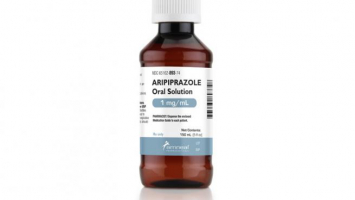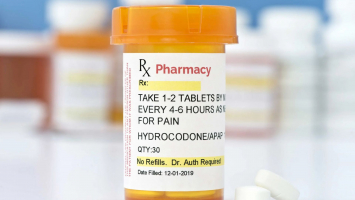Top 7 Things to Know About Ciprofloxacin
Find out how ciprofloxacin treats serious infections and how to take or use it.... read more...
-
Brand names: Ciproxin, Ciloxan, Cetraxal
Ciprofloxacin is a type of antibiotic. It belongs to the fluoroquinolone antibiotic class. It kills the bacteria that causes an infection.
Ciprofloxacin is a broad-spectrum antibiotic, which means it can treat a wide range of bacterial infections, including:- uncomplicated urinary tract infections (UTIs) where other antibiotics are not suitable and complicated UTIs
- chest infections (including pneumonia)
- skin and bone infections
- sexually transmitted infections (STIs)
- conjunctivitis
- eye infections
- ear infections
- infections that other antibiotics have been unable to treat
It is also used to help prevent meningitis in people who have had close contact with someone who has the infection.
Ciprofloxacin is only available with a doctor's prescription.
It is available as tablets, a liquid to drink, ear drops, and eye drops. It is also administered via injection, but this is usually done in a hospital.
Ciprofloxacin ear drops are also available in combinations with other medications, such as fluocinolone, also known as Cetraxal Plus, or dexamethasone.
Because of the risk of serious side effects, ciprofloxacin tablets and liquid are not as commonly used as other types of antibiotics.
Key facts- The most common ciprofloxacin tablet and liquid side effects are nausea and diarrhea.
- Avoid taking tablets or liquid with dairy products such as milk, cheese, and yogurt, as well as products with added calcium. They prevent ciprofloxacin from entering the body through the stomach.
- Ciprofloxacin is rarely prescribed for longer than three months at a time. This is to keep you from experiencing more serious side effects.
- Ciprofloxacin may cause fatigue or drowsiness, as well as temporary stinging or burning in your eyes. You should avoid driving, cycling, and operating heavy machinery until you feel better.
- Ciprofloxacin begins to work immediately and, depending on the type of infection, you should notice an improvement in your symptoms within 2 to 3 days. Consult your doctor if it takes longer for your symptoms to improve.
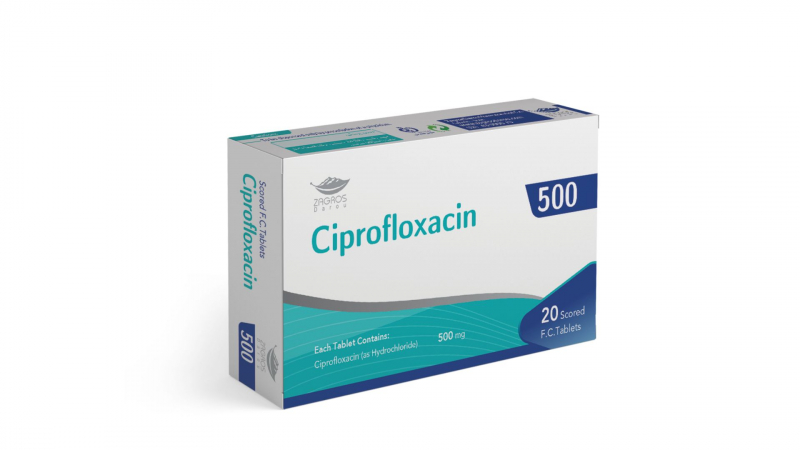
zagrosdarou.com Medical Videos -
Who can take or use ciprofloxacin?
Ciprofloxacin is safe for most adults and children over the age of one.Who should not take or use ciprofloxacin?
Some people should not take Ciprofloxacin. To ensure your safety, consult your doctor or pharmacist before taking or using it if you:- have you ever been allergic to ciprofloxacin or any other medication?
- ever experienced a severe side effect from ciprofloxacin or another antibiotic (particularly a fluroquinolone)
- have previously experienced diarrhea while taking antibiotics
- have a large blood vessel called the aorta (which runs from the heart to the abdomen) problems, such as an abdominal aortic aneurysm or any other aorta-related issues, or if a member of your family has experienced these issues
- possess an erratic heartbeat or a quick, pounding heartbeat
- possess a congenital heart condition, a heart infection, or heart valve disease
- have an uncontrolled blood pressure condition
- have Behcet's disease, rheumatoid arthritis, or a connective tissue disorder
- a condition like Marfan syndrome
- suffer from tendon issues
- have epilepsy or a condition that makes you susceptible to seizures or fits
- suffer from kidney issues
- have diabetes, as ciprofloxacin may affect your blood sugar levels
- are nursing, trying to get pregnant, or pregnant

Thermax 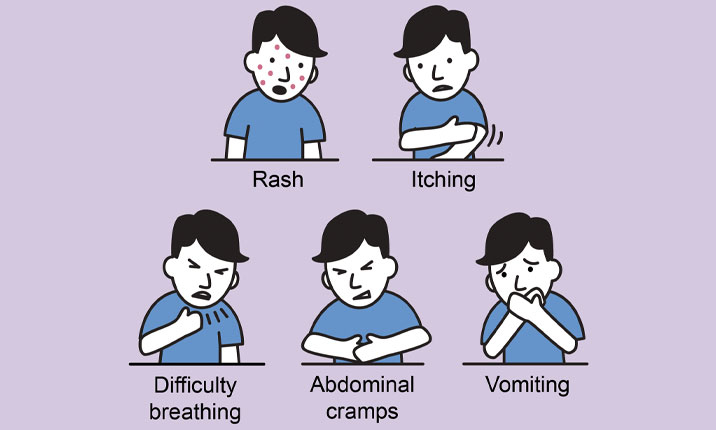
Mount Elizabeth Hospitals -
The way you take your medicine is determined by the type of ciprofloxacin you're taking or using. Follow the on-screen instructions.
Dosage and strength of ciprofloxacin tablets and liquid
Ciprofloxacin is available in different strengths. It comes as:
- 100mg, 250mg, 500mg, and 750mg tablets
- a liquid that contains 250mg in 5ml
Ciprofloxacin tablets or liquid are typically taken twice daily at a dose of 250mg to 750mg. For some infections, you may only require a single dose.
Children and people with kidney problems are usually given lower doses.Dosage for ciprofloxacin eye drops
The usual dose is 1 or 2 drops into the affected eye 4 times a day.
Dosage for ciprofloxacin ear drops
You'll usually use up to 5 drops, twice a day.
How to take or use itCiprofloxacin tablets and liquid can be taken with or without food. However, dairy products such as milk, cheese, and yogurt should be avoided because they can interfere with how your medicine works.
Taking ciprofloxacin tablets
Swallow the tablets whole with lots of water. Do not chew them.
Taking ciprofloxacin liquidCiprofloxacin liquid comes in two bottles, one with granules and one with liquid.
- Fill the larger bottle halfway with granules. No water should be added to the liquid.
- Shake the larger bottle with the liquid and granules for about 15 seconds.
- Measure your dose after opening the bottle.
Always use the provided plastic syringe or spoon to help you take the correct amount. If you don't have one, you can get one from your pharmacist. A kitchen teaspoon will not accurately measure the amount.
Using ciprofloxacin eye drops
1 or 2 drops are usually placed in the affected eye 4 times per day.
In the case of severe infections, your doctor may advise you to use the drops every 15 minutes for the first 6 hours. You can then use it less frequently.- Wash your hands.
- Gently pull down your lower eyelid and tilt your head back.
- Hold the bottle over your eye and allow a single drop to fall into the space between your lower lid and your eye.
- Put in a second drop if you have been told to.
Using ciprofloxacin eardrops
Ciprofloxacin ear drops are available in single-dose or 5ml bottles. When using single-dose ciprofloxacin, use one container for one dose.
- Hold the container or bottle in your hands for a few minutes to warm the drops.
- Wash your hands before using.
- Tilt your head and bring the container or bottle up to the affected ear, and open the end near the ear hole.
- Place the drops in your ear.
- If possible, rest for at least 5 minutes afterward.
- If you are only treating one ear, tilt your head to one side so that the affected ear is facing the ceiling.
Do not touch your ear with the dropper as this may spread the infection.
Put up to 5 drops into the affected ear twice a day, or as directed by your doctor. Use 4 drops for each dose if using ear drops from a 5ml bottle.
How long to take or use it for
Ciprofloxacin is typically taken or used for a week or two. For some infections, you may only need to take or use it for a day, while others may require up to three months.
Your doctor will advise you on how long you should take or use ciprofloxacin.
It is critical that you continue to take or use ciprofloxacin until your course is completed. Even if you feel better, do this.
If you discontinue treatment too soon, the infection may reoccur. It also provides any remaining bacteria with the opportunity to change or adapt so that they are no longer affected by the antibiotic. This is referred to as antibiotic resistance.If you forget to take or use it
If you forget a dose, take it as soon as you remember, unless your next dose is approaching. Simply skip the missed dose and take your next one at the regular time.
Make sure you finish your antibiotic course. Do not take two doses to compensate for a missed dose.
If you frequently forget to take your medication, setting an alarm may help. You could also seek advice from your pharmacist on alternative methods of remembering your medications.If you take or use too much
If you use eye or ear drops, don't be concerned if you use a little too much. This usually does not cause any issues.
If you take more than the recommended dose of the tablets or liquid, you may experience side effects. Feeling or being sick (nausea or vomiting), diarrhea, and a pounding or irregular heartbeat are examples. If you have epilepsy, you may experience seizures or fits.
Urgent advice:- If you need help right away, dial 111.
- your child exceeds the recommended ciprofloxacin dose
- you take 2 extra ciprofloxacin doses or more
- you took more ciprofloxacin than prescribed and are experiencing side effects
Visit 111.nhs.uk or dial 111. If you have a question about a child under the age of five, dial 111.
Do not drive yourself to A&E if you need to go. Request a ride from someone else or call an ambulance.
Carry the medicine packet or leaflet, as well as any remaining medication, with you.How To Medicate 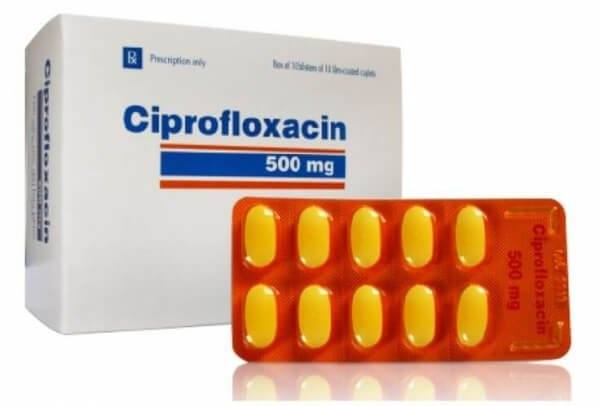
Vinmec -
Like all medicines, ciprofloxacin can cause side effects although not everyone gets them.
Common side effects
Ciprofloxacin side effects affect more than one out of every 100 people. You can help yourself cope by doing the following:
- Feeling sick (nausea)
- Diarrhea
- Redness or discomfort in the eye
- Bad taste in the mouth
- White specks on the surface of your eye
- Speak with a doctor or pharmacist if this coping advice does not help and a side effect persists or lasts more than a few days.
Serious side effects
Very few people taking or using ciprofloxacin have serious side effects. They are less likely to happen with eye drops or ear drops.
These serious side effects can happen in less than 1 in 100 people. Stop taking ciprofloxacin and tell your doctor or contact 111 straight away if you have:
- muscle weakness, pain, or swelling in your joints or tendons. This often begins in the ankle or calf, but could also be in your shoulder, arms, or legs. It can happen in the first 2 days of taking ciprofloxacin or even several months after stopping. It is more common in children
- pain or abnormal sensations (such as pins and needles that do not go away, tingling, tickling, numbness or burning) or weakness in your body, especially in your legs or arms
- severe tiredness, feeling anxious or very low in mood or difficulty sleeping or remembering things
- ringing in your ears (tinnitus), loss of taste, seeing double, or any other changes in your sight, smell, taste or hearing
- diarrhea (perhaps with muscle cramps) that contains blood or mucus – if you have severe diarrhea without blood or mucus for more than 4 days, also speak to a doctor
- a faster or irregular heartbeat, or heartbeats that suddenly become more noticeable (palpitations)
- sudden breathlessness, especially when you're lying down
- swollen ankles, feet, or stomach
Go to 111.nhs.uk or call 111.
Call 999 if:
- you have sudden, severe pain in your stomach, chest or back
- you have seizures or fits
Serious allergic reaction
- In rare cases, it's possible to have a serious allergic reaction (anaphylaxis) to ciprofloxacin.
Call 999 or go to A&E now if:
- you get a skin rash that may include itchy, red, swollen, blistered or peeling skin
- you're wheezing
- you get tightness in the chest or throat
- you have trouble breathing or talking
- your mouth, face, lips, tongue or throat start swelling
You could be having a serious allergic reaction and may need immediate treatment in the hospital.

Mediscuss 
Westbrook Youth and Family Services -
Ciprofloxacin and pregnancy
- In general, it is not advised to take Ciprofloxacin tablets or liquid while pregnant. It is acceptable to use ear or eye drops, though.
- Ask your doctor about taking ciprofloxacin if you're trying to conceive or are already pregnant. They will probably suggest an alternative antibiotic that is safer to take while pregnant.
Ciprofloxacin and breastfeeding
- You can take ciprofloxacin while breastfeeding if your doctor or health visitor says your baby is healthy.
- Ciprofloxacin passes into breast milk in trace amounts and is unlikely to harm your baby. However, one case of severe diarrhea in a breastfed baby has been reported.
- Although other medications may be preferred while breastfeeding, it is critical that you take a medication that works for you. Consult your doctor or pharmacist for advice.
- If your baby is not feeding normally, is sick or has diarrhea, has oral thrush (mouth thrush) or a skin rash, or if you have any other concerns about your baby, consult your doctor, pharmacist, health visitor, or midwife.
Ciprofloxacin and fertility
- There is no convincing evidence that ciprofloxacin reduces fertility in either men or women.
- However, if you're trying to get pregnant, consult a pharmacist or your doctor before taking it.
Tell your doctor if you're:
- trying to get pregnant
- pregnant
- breastfeeding

Calm Clinic 
BuzzRx -
Cautions with other medicines
Some medications can have an effect on how ciprofloxacin works. They can also increase your chances of experiencing side effects.
Before taking ciprofloxacin, inform your doctor if you are taking any of the following medications:- antacids for heartburn or indigestion – take ciprofloxacin at least 2 hours before antacids or at least 4 hours after
- methotrexate, a medicine used to treat conditions such as rheumatoid arthritis
- phenytoin, a medicine for epilepsy
- steroids, such as prednisolone
- theophylline or aminophylline for asthma
- tizanidine, a medicine used for muscle stiffness
- warfarin, a medicine to help prevent blood clots
Mixing ciprofloxacin with herbal remedies and supplements
Ciprofloxacin can be affected by iron tablets (such as ferrous sulfate or ferrous fumarate), calcium, and zinc supplements. Allow 2 hours between taking supplements and taking your ciprofloxacin tablets or liquid.
There is insufficient evidence to say whether other complementary medicines, herbal remedies, and supplements are safe to take alongside ciprofloxacin. They are not subjected to the same rigorous testing as pharmacy and prescription medications. They are rarely tested for the impact they have on other medications.
Vinmec 
Burt's Pharmacy -
How does ciprofloxacin work?
Ciprofloxacin belongs to a class of antibiotics known as fluoroquinolones (or quinolones).
Fluoroquinolone antibiotics kill the bacteria that cause an infection.
When will I feel better?
Most infections should make you feel better within a few days, though this depends on the type of infection.
Inform your doctor if you do not feel better after 2 to 3 days of taking or using ciprofloxacin, or if you feel worse at any time.
Some infections, such as bone infections like osteomyelitis, will take longer to clear. In this case, you should begin to feel better after a week or so.
Are there any long-term side effects?
Ciprofloxacin is typically used for a short period of time to treat an infection.
Ciprofloxacin is widely used and has few side effects.
However, some people experience severe side effects. These can occur during treatment or months after it has ended. These can be long-lasting or never go away in a few people.
Ciprofloxacin is not prescribed for more than three months at a time because the side effects can be severe.
It is critical that you continue to take ciprofloxacin until your course is completed. If you are concerned, consult your doctor or pharmacist.
How does ciprofloxacin compare to other antibiotics?
Ciprofloxacin is an antibiotic that belongs to the fluoroquinolone (or quinolone) class.
Antibiotics kill different kinds of bacteria. Your doctor will prescribe an antibiotic based on the types of bacteria that they believe are causing your infection.
Some antibiotics are more specific (broad-spectrum), while others kill a broader range of bacteria (broad-spectrum).
Ciprofloxacin is a broad-spectrum antibiotic that was previously used to treat a variety of infections, particularly respiratory and urinary tract infections.
Because of the risk of serious side effects, ciprofloxacin is not as widely used as some other antibiotics.
Levofloxacin, moxifloxacin, and ofloxacin are examples of quinolone antibiotics.
Quinolones can all be used to treat certain chest, eye, and genital infections.
Levofloxacin and ofloxacin are typically taken once or twice daily. Moxifloxacin is only administered once per day.
Levofloxacin is also available as a liquid that you can breathe in to treat certain lung infections.
Will it affect my contraception?
Ciprofloxacin has no effect on contraception methods, including the combined pill and emergency contraception.
However, if you are sick (vomit) or have severe diarrhea for more than 24 hours after taking ciprofloxacin, your contraceptive pills may not protect you from pregnancy.
Check the pill package to see what to do.
Can I drive or ride a bike?
Ciprofloxacin may cause fatigue or drowsiness.
Before driving or riding a bike, make sure you understand how you will react to ciprofloxacin.
Do not drive or ride a bike if you experience stinging or burning in your eyes immediately after using ciprofloxacin eye drops. Wait until your eyes are no longer sore and your vision is clear.
Ear infections can cause you to lose your equilibrium. It's best not to drive or ride a bike if you're affected until you feel better.
It is illegal to drive a car if your ability to drive safely is impaired. It is your responsibility to determine whether or not it is safe to drive. If you have any doubts, don't drive.
If you are unsure whether it is safe for you to drive while taking ciprofloxacin, consult your doctor or pharmacist.
Is there any food or drink I need to avoid?
Take the liquid or tablets separately from dairy products (such as milk, cheese, and yogurt) or calcium-fortified beverages (such as some dairy-free kinds of milk). They prevent ciprofloxacin from entering the body through the stomach.
Allow at least 2 hours between taking ciprofloxacin and eating or drinking this type of food or drink. It is then acceptable to consume dairy or calcium as part of a balanced diet.
You do not need to refrain from eating or drinking while using the eye or ear drops.
The Muse 
Tamborin
























